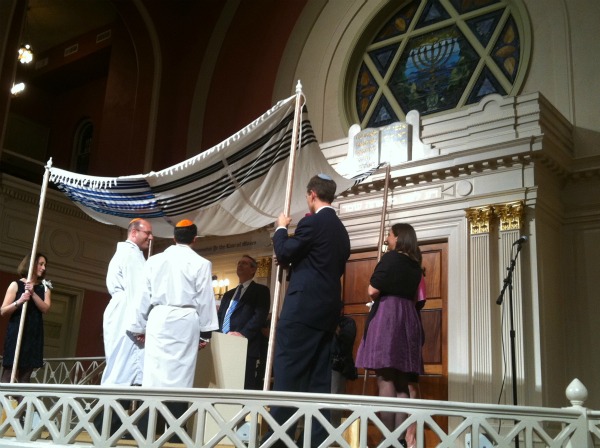
A few years ago, while I was working as a staff member at Brandeis High School Programs, someone asked me what could be done for LGBTQ people who were still in the closet. At first, I had no response. The only real way to give someone the direct help that they need is for them to come out and ask for the help that they need.
That’s the power of National Coming Out Day, which took place yesterday: a day dedicated specifically toward amplifying the narratives of those of us who feel the need to, and do, come out of the closet at some point in our lives. National Coming Out Day gives us a specific day to make the space for coming out — and coming out is important.
But National Coming Out Day is just that — a day. At some point, the process of coming out eventually comes to an end, which is just another way of saying that coming out never really ends. Eventually, my being queer became a fact of life to myself and those around me, but I still have to make the conscious decision of whether or not I will be out in the new spaces I enter. As much as I am comfortable and feel safe in my identity as a queer person, that feeling of safety changes in the different spaces I am in. Even if I am personally comfortable with myself does not mean that I feel safe as a queer person.
This sheds some light on the problematic way in which we think about “safe spaces” for people to come out. So much has changed in the Orthodox world in the almost five years since I first came out to my friends and family in high school — and even in the two years since I started writing for New Voices, which gave me the ability to think critically and write about these issues. And yet, the “safe” spaces in our Jewish — and specifically Orthodox — communities still remain, in many ways, unsafe.
It is, in many ways, easy to make spaces safe for people to come out. A single, usually young, person can come out with few to no repercussions, and it’s easy for a community to support someone when they come out (or, at least, when they come out as queer in some way — this is to say nothing of people who come out as transgender).
Maintaining a safe space, however, becomes much more complicated as we grow older. Easy though it may be to make a safe space for a queer teen — even if the impetus for making the safe space comes from a place of pity — it becomes infinitely more complicated as we queer people become older and want to create our own families. Some things are relatively easy: changing synagogue membership forms to include “Partner A” and “Partner B” as opposed to “Husband” and “Wife” is simple compared to the Jewish legal changes needed to facilitate queer marriage or commitment ceremonies, or the myriad of other ways in which queer people butt up against the norms that our legal tradition sets and we find out that “safe” spaces are, indeed, much harder to form. Queer people are threatening to traditional communities and question the very notion of whether our religious spaces are truly “safe,” harmless though the Human Rights Campaign might make us seem.
Despite the efforts of many organizations to portray LGBTQ people as utterly normal in every way other than just their sexual orientation or gender identity, the reality is that in many communities — and this is no less true in communities of faith — the presence of queer people is seen as dangerous to the “traditional” (read: heterosexual) way of life. The reality is that I, as a queer person, do pose challenges to the Orthodox world, and I, as a queer person, expose some of the fragilities that come with drawing religious boundaries along gendered lines.
It’s easy to make National Coming Out Day a day of celebration, but it’s quite another to make the day after — today — one where we continue to work. In the same way that the struggle for LGBTQ equality did not end with the legalization of marriage equality in June, so too are spaces not made safe just by the fact that it’s safe to come out for the first time. A truly “safe” space allows your out-ness as a queer person to be sustained over the arc of your life. A truly “safe” space gives you the opportunity to simply be out, and to continue coming out to those around you, without the fear of being treated like a second-class citizen.
Synagogue forms can change, but as I look forward and begin to think, even abstractly, of the ways my life might change after college, there are ways in which these spaces are still fundamentally unsafe, with no end in sight for those Orthodox spaces.
So how do we make spaces safe for those who are not out? We do the same thing as for those who are already out: We give them a future. We tell them that they can, and do, have a part in their communities, and that the safeness goes beyond just their initial coming out — it extends to the rest of their lives, in all of the possible directions that it might take them.
That is what must happen today, the day after National Coming Out Day.
Amram Altzman is a student at List College.
